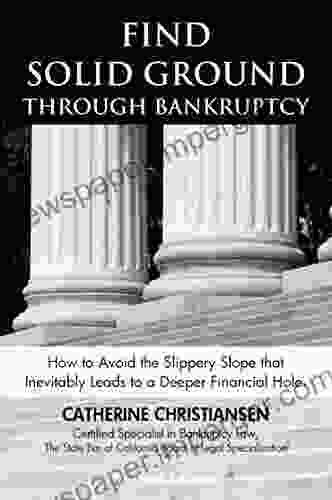Find Solid Ground Through Bankruptcy: The Ultimate Guide to Financial Recovery

Bankruptcy can be a daunting and overwhelming experience. However, it can also be a necessary step towards financial recovery. If you're considering filing for bankruptcy, it's important to understand your options and the process involved. This article will provide you with a comprehensive guide to bankruptcy, including the types of bankruptcy, the eligibility requirements, and the process of filing. We'll also discuss the benefits and risks of bankruptcy and provide tips on how to rebuild your credit after filing.
Types of Bankruptcy
There are two main types of bankruptcy for individuals: Chapter 7 and Chapter 13.
5 out of 5
| Language | : | English |
| File size | : | 511 KB |
| Text-to-Speech | : | Enabled |
| Screen Reader | : | Supported |
| Enhanced typesetting | : | Enabled |
| Word Wise | : | Enabled |
| Print length | : | 52 pages |
| Lending | : | Enabled |
Chapter 7 Bankruptcy
Chapter 7 bankruptcy is a liquidation bankruptcy. This means that the court will sell your non-exempt property and use the proceeds to pay off your debts. In Free Download to be eligible for Chapter 7 bankruptcy, you must meet certain income requirements. You must also pass a means test, which compares your income and expenses to determine whether you can afford to repay your debts. If you qualify for Chapter 7 bankruptcy, the process is relatively straightforward. You will file a petition with the bankruptcy court and provide the court with information about your income, assets, and debts. The court will then appoint a trustee to oversee the liquidation of your property.
Chapter 13 Bankruptcy
Chapter 13 bankruptcy is a reorganization bankruptcy. This means that you will create a plan to repay your debts over a period of time. Chapter 13 bankruptcy is available to both individuals and businesses. In Free Download to be eligible for Chapter 13 bankruptcy, you must have regular income and be able to afford to repay your debts. You must also file a plan with the bankruptcy court that outlines how you will repay your debts. The court will then approve or deny your plan. If your plan is approved, you will make regular payments to the bankruptcy trustee, who will distribute the money to your creditors.
Eligibility Requirements
To be eligible for bankruptcy, you must meet certain requirements. These requirements vary depending on the type of bankruptcy you are filing.
Chapter 7 Bankruptcy Eligibility Requirements
To be eligible for Chapter 7 bankruptcy, you must meet the following requirements:
- You must pass a means test, which compares your income and expenses to determine whether you can afford to repay your debts.
- You must not have filed for bankruptcy within the past eight years.
- You must not have committed any bankruptcy fraud.
Chapter 13 Bankruptcy Eligibility Requirements
To be eligible for Chapter 13 bankruptcy, you must meet the following requirements:
- You must have regular income.
- You must be able to afford to repay your debts.
- You must file a plan with the bankruptcy court that outlines how you will repay your debts.
The Process of Filing for Bankruptcy
The process of filing for bankruptcy can be complex and time-consuming. However, it is important to follow the steps carefully to ensure that your case is successful.
Step 1: Gather Your Documents
The first step in filing for bankruptcy is to gather your documents. You will need to provide the court with information about your income, assets, and debts. This information will be used to determine your eligibility for bankruptcy and to create a repayment plan.
Step 2: File a Petition
Once you have gathered your documents, you will need to file a petition with the bankruptcy court. The petition will contain information about your name, address, income, assets, and debts. You will also need to file a statement of financial affairs, which is a detailed accounting of your financial situation.
Step 3: Attend a Meeting of Creditors
After you file a petition, you will be required to attend a meeting of creditors. At this meeting, your creditors will have an opportunity to question you about your finances and to object to your bankruptcy discharge.
Step 4: Receive a Discharge
If your bankruptcy case is successful, you will receive a discharge. A discharge is a court Free Download that releases you from your debts. However, not all debts are dischargeable in bankruptcy. Some debts, such as student loans and child support, are not dischargeable.
Benefits and Risks of Bankruptcy
Bankruptcy can provide a number of benefits, including:
- Relief from debt
- A fresh start
- Protection from creditors
However, bankruptcy also has some risks, including:
- Damage to your credit score
- Loss of property
- Difficulty obtaining credit in the future
Rebuilding Your Credit After Bankruptcy
If you file for bankruptcy, it is important to take steps to rebuild your credit. Here are a few tips:
- Make all of your payments on time.
- Keep your credit card balances low.
- Dispute any errors on your credit report.
- Build a positive credit history by getting a secured credit card or a credit-builder loan.
Bankruptcy can be a valuable tool for individuals who are struggling with overwhelming debt. However, it is important to understand the benefits and risks of bankruptcy before you file. If you are considering filing for bankruptcy, it is important to speak with an attorney to discuss your options.
5 out of 5
| Language | : | English |
| File size | : | 511 KB |
| Text-to-Speech | : | Enabled |
| Screen Reader | : | Supported |
| Enhanced typesetting | : | Enabled |
| Word Wise | : | Enabled |
| Print length | : | 52 pages |
| Lending | : | Enabled |
Do you want to contribute by writing guest posts on this blog?
Please contact us and send us a resume of previous articles that you have written.
 Book
Book Novel
Novel Page
Page Chapter
Chapter Text
Text Story
Story Genre
Genre Reader
Reader Library
Library Paperback
Paperback E-book
E-book Magazine
Magazine Newspaper
Newspaper Paragraph
Paragraph Sentence
Sentence Bookmark
Bookmark Shelf
Shelf Glossary
Glossary Bibliography
Bibliography Foreword
Foreword Preface
Preface Synopsis
Synopsis Annotation
Annotation Footnote
Footnote Manuscript
Manuscript Scroll
Scroll Codex
Codex Tome
Tome Bestseller
Bestseller Classics
Classics Library card
Library card Narrative
Narrative Biography
Biography Autobiography
Autobiography Memoir
Memoir Reference
Reference Encyclopedia
Encyclopedia John H Mallinson
John H Mallinson John Radzilowski
John Radzilowski John Oakley Mcelhenney
John Oakley Mcelhenney John M Brewer Jr
John M Brewer Jr John Delaughter
John Delaughter John Harrison
John Harrison Jordan Cooper
Jordan Cooper John Steinbeck
John Steinbeck John F Kennedy
John F Kennedy John Hansen
John Hansen Johnny Molloy
Johnny Molloy John Danziger
John Danziger Joi Miner
Joi Miner John E Crowley
John E Crowley John Holl
John Holl John Harris
John Harris Jonathan A Edlow
Jonathan A Edlow John Lukacs
John Lukacs John Eastman
John Eastman John Lambshead
John Lambshead
Light bulbAdvertise smarter! Our strategic ad space ensures maximum exposure. Reserve your spot today!
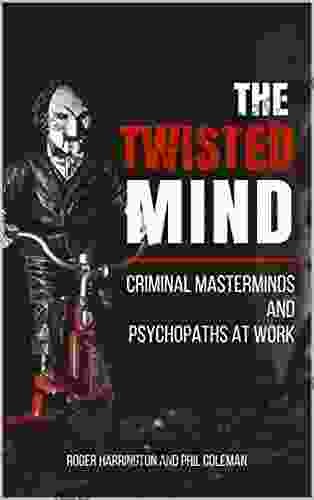
 Vincent MitchellCriminal Masterminds and Psychopaths at Work: Unmasking the Cunning and the...
Vincent MitchellCriminal Masterminds and Psychopaths at Work: Unmasking the Cunning and the...
 Logan CoxEmbrace Sustainability: Revolutionizing American Agriculture for Our Thriving...
Logan CoxEmbrace Sustainability: Revolutionizing American Agriculture for Our Thriving... Shawn ReedFollow ·9.5k
Shawn ReedFollow ·9.5k Dan BrownFollow ·19.8k
Dan BrownFollow ·19.8k Edwin BlairFollow ·3.3k
Edwin BlairFollow ·3.3k Ryūnosuke AkutagawaFollow ·8.7k
Ryūnosuke AkutagawaFollow ·8.7k Asher BellFollow ·13.9k
Asher BellFollow ·13.9k Harvey BellFollow ·14.7k
Harvey BellFollow ·14.7k Howard PowellFollow ·15.7k
Howard PowellFollow ·15.7k Elliott CarterFollow ·4.9k
Elliott CarterFollow ·4.9k
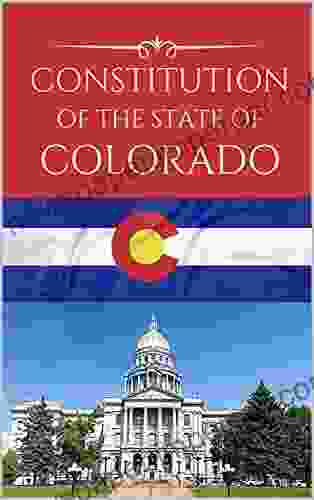
 Jake Powell
Jake PowellThe Constitution of the State of Colorado: A Legacy of...
Since its adoption in 1876, the...
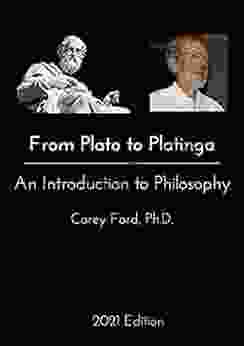
 Devin Ross
Devin RossFrom Plato to Plantinga: A Journey Through the History of...
Philosophy is the study of...
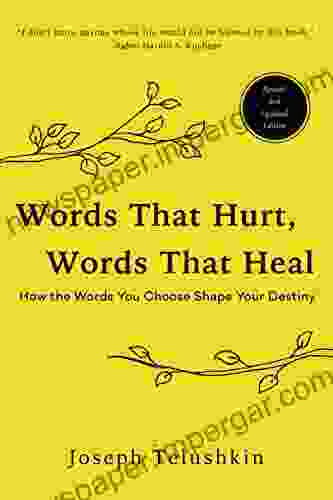
 Robin Powell
Robin PowellWords That Hurt, Words That Heal: The Power of Language...
Words are powerful. They can...

 T.S. Eliot
T.S. EliotTantalize Your Taste Buds with Over 90 Low-Carb Ethnic...
Indulge in a Culinary Adventure with "Over...
5 out of 5
| Language | : | English |
| File size | : | 511 KB |
| Text-to-Speech | : | Enabled |
| Screen Reader | : | Supported |
| Enhanced typesetting | : | Enabled |
| Word Wise | : | Enabled |
| Print length | : | 52 pages |
| Lending | : | Enabled |


